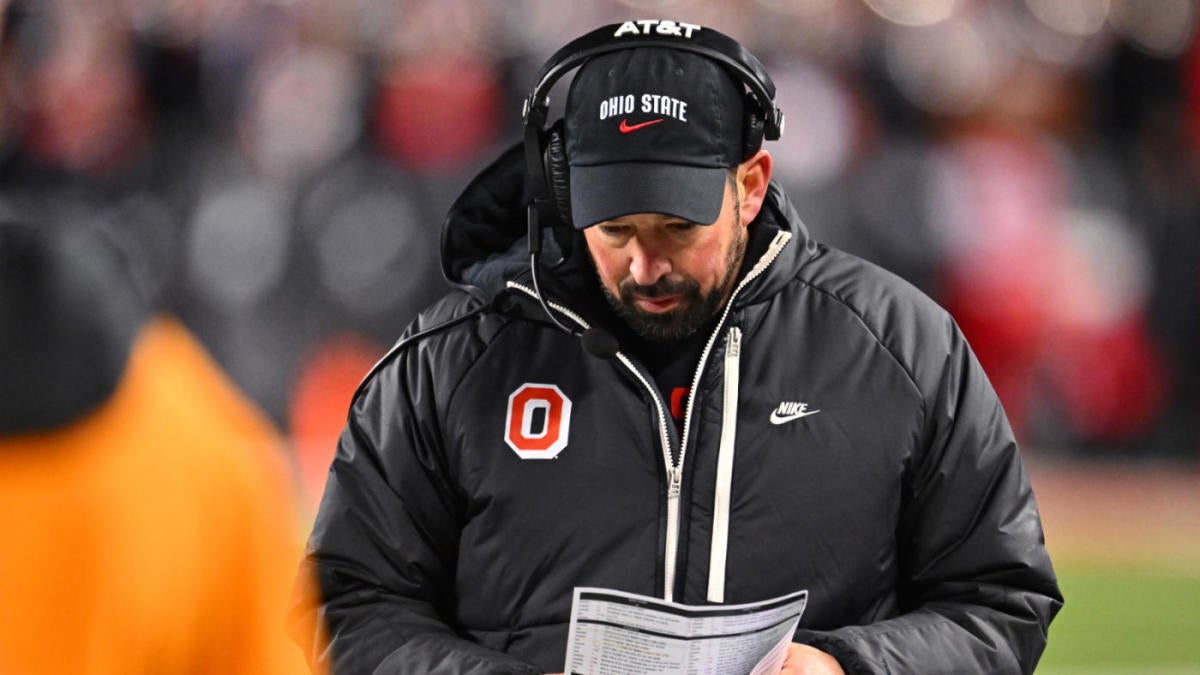Bussiness
Ford CEO: ‘We’re Getting Out Of The Boring-Car Business’ – The Autopian

The first step in fixing a problem is recognizing what the problem is in the first place. I think of all the major Detroit automakers it’s probably Ford that’s best at recognizing the problem, even if the company isn’t that close to a solution. Is Ford’s CEO the only one who gets it or is he being blinded by being too much of a gearhead?
Today’s installment of The Morning Dump is all about the future, even if all I’m thinking about is the Astros game against Detroit’s own Tigers that’s happening today. That one is going to be tough for me. I want the Astros to beat them but, at the same time, I recognize that the Tigers are a way better story.
![]()
It’s the same for Tesla and BYD in China. It looks like both companies had a great Q3 and I’m inclined towards an American company crushing overseas. Still, I want Tesla to re-focus on affordable products, which is where BYD shines. If Ford has a big future, how about the rest of the Detroit automakers? Well, Stellantis is having to recall almost all of its plug-in hybrid Jeeps and GM is still paying for its Cruise debacle. So not great.
Aight, I need to get a whole day’s worth of work done before the first pitch so let’s gooooooo.
Enthusiast Products Are ‘Our Business’
I’ve been thinking about writing ‘The Bull Case for Ford’ as a TMD for a while, premised on the automaker being in what I think might be the best position to win the future. Why don’t I? Whenever I get the idea in my head the company does another recall or releases another questionable product and I decide not to do it.
Looking broadly at what used to be Detroit’s Big 3 I think you’d have wanted to be Stellantis during the pandemic. Its costs were low, its products were cheap to make, and it made a ton of money. Right now I think you’d rather be General Motors, which has a diverse EV portfolio and is still making great trucks and profitable small crossovers. So why is the future shaped like a blue oval?
The last time I decided to write this post I was in England looking at a bunch of fast Fords that I grew up loving. Clearly, at the heart of this brand are some amazing and iconic cars. And then I walked over to the Ford Capri EV stand. I haven’t driven the Capri, but I’ve driven VW MEB-platform cars before, and they’re fine. One dressed up like a crossover with some cues borrowed from the vintage Capri just doesn’t do it for me.
Ford CEO Jim Farley did a big interview with Car Magazine at a launch for the new, MEB-based European Explorer and it’s giving me a little hope. I’m going to start with the bit that everyone seems to be paying attention to:
‘We’re getting out of the boring-car business and into the iconic-vehicle business,’ he tells me. ‘We’d always competed at the heart of the passenger-car market, which didn’t work out too well for Mondeo, Focus and Fiesta. They were loved by a lot of customers but they could never justify more capital allocation – unlike commercial vehicles.’
[..]
‘Ford never funded enthusiast products – they were always a side business. Now with Mustang, Raptor and Bronco, they’re our business,’ says Farley.
Having driven the Puma ST I agree that it’s a fun vehicle and not another boring crossover, though the fun versions don’t seem long for this world. The long-rumored Mustang Raptor also comes up, and Farley seems to hint that we’ll see it sooner rather than later, and that we’ll see more RS-badged cars. Farley also says that Ford can “take on Porsche” with the Mustang and that more money will be put into that brand, which sounds good.
The MEB bit has always bugged me, though. Ford has touted its skunkworks team that’s trying to develop a cheap electric platform to underpin the next generation of the company’s EVs, but is that just throwing ideas at the wall and waiting to see what sticks?
If there’s hopefulness to be drawn from this interview it’s in Farley’s quiet admission that the MEB play with Volkswagen was a short-term solution to the problem of getting an EV platform to Europe and that he understands that China and Tesla are the real competitors and that beating them requires a purely Ford-built solution:
‘If your bet is the digital experience as a differentiator, you can’t use someone else’s electric architecture. If I use MEB, then another architecture in China, one in North America and another for export, that’s multiple different software. Software that has to be written to the individual module for propulsion, braking, steering, seats. If [Ford] is very committed to digital differentiation, it’s impossible to have that complexity.
‘One of my biggest bets as CEO is our platforms, including our electric architectures. There will be places where we work with each other, such as MEB. But in the future that will be harder, not easier.’
The ‘No more boring cars’ line gets the headlines and I, too, couldn’t resist. But it’s the quote above that’s key. If an automaker is going to survive it needs more than a distinct brand identity for its products. If Ford wants to sell in any volume it needs a digital experience and a platform that are unique to Ford. It doesn’t really have that now. General Motors does in Ultium and we’ll see if the cheaper Equniox EV is a hit.
If there’s a bull case for Ford it’s that it’ll be able to develop a scalable and affordable platform that works like a Tesla and looks like a Ford. The bear case is that it’s super hard. It’s the hardest thing Ford has done in 120 years. I’m not sure it can pull it off, but unlike Stellantis or even Volkswagen, I can at least articulate what a future Ford looks like.
That’s not nothing.
Will Tesla Or BYD Sell More EVs In China In Q3?
You can never count out Tesla because it’s probably the most flexible large automaker in the world. It only makes a small number of products and it has enough of a war chest to throw crazy discounts and deals to make up volume whenever it wants.
China is Tesla’s most important market, and it’s also the most difficult place to be an electric carmaker. The competition is cutthroat, and the consumers are wary of spending money given all the lingering economic uncertainty. Tesla’s big ploy, in addition to price cuts, has been offering discounted insurance. So far it seems to be working.
Domestic automaker BYD has also been playing the discount game and was rewarded with a strong first half of the year. What BYD offers is a more diverse range of cars and super cheap EVs like the BYD Seagull, which has a nice interior and decent range for the price equivalent of a pack of Wrigley’s Doublemint gum (ok, about $10k, but not far off).
We’ll find out soon enough who was on top in BEV sales (BYD almost certainly sold more cars since it also sells hybrids), but there’s some early data to consider
According to CnEVPost, BYD sold a total of 164,956 passenger BEVs in September, an increase of 9.1% year-over-year. Its PHEVs were even more successful, reaching 252,647 vehicles in the month. In total, BYD sold 419,426 vehicles with a plug during the month. That brings the total BEV sales for BYD up to 443,426 units in Q3.
Now we’re just waiting on Tesla to report, though we know that the company is expected to sell more than 460,000 BEVs in Q3 globally.
Stellantis Recalling 194,000 Plug-In Jeep Hybrids
Earlier this month I wrote about an impending recall of Jeep PHEV vehicles that were catching on fire whilst parked. The recall is now coming.
From Reuters via Automotive News:
The Italian-American automaker is recalling some 2020 through 2024 model year Jeep Wrangler and 2022 through 2024 Jeep Grand Cherokee plug-in hybrids. The issue involves a battery component, the company said.
The Chrysler-parent company said the fires occurred when the vehicles were parked and turned off. It estimates 5 percent of affected vehicles might have the defect.
Stellantis said vehicle risk is reduced when the battery charge level is depleted and said owners are advised to refrain from recharging and should park away from structures or other vehicles. The company said a remedy is imminent.
I like the 4xe, and it’s been one of the brighter spots in a dim year for Stellantis, so this has to sting a bit.
GM Paying $1.5 Million Fine Over Lack Of Disclosure

Almost exactly a year ago a Cruise Robotaxi in San Francisco was out on duty when it was involved in an accident that resulted in the Cruise vehicle dragging a pedestrian 20 feet to the side of the road. This was obviously a big issue, made worse by Cruise’s decisions to withhold information from regulators, leading to its self-driving license being revoked, forcing it to temporarily shut down its taxi service, and seeing its executive team either leave or get fired.
Cruise’s vehicles are back on the road, but the company isn’t yet done with the fallout. From Reuters via the Detroit Free Press:
The National Highway Traffic Safety Administration said on Monday that General Motors’ self-driving car unit Cruise will pay a $1.5 million fine after it failed to disclose details of a serious October 2023 crash involving a pedestrian.
Under the settlement, Cruise must submit to NHTSA a corrective action plan on how it will improve its compliance with reporting of serious incidents and face enhanced reporting requirements for at least two years.
GM’s President Mark Reuss said it would take five years to win back trust, so just four years to go.
What I’m Listening To While Writing TMD
Scottish producer/artist SOPHIE was amazing, and her tragic death is an incalculable loss to music. If you don’t know her, I suggest this profile/review of SOPHIE’s posthumously released self-titled album from our old colleague Jia Tolentino.
The Big Question
Can Ford do it?












